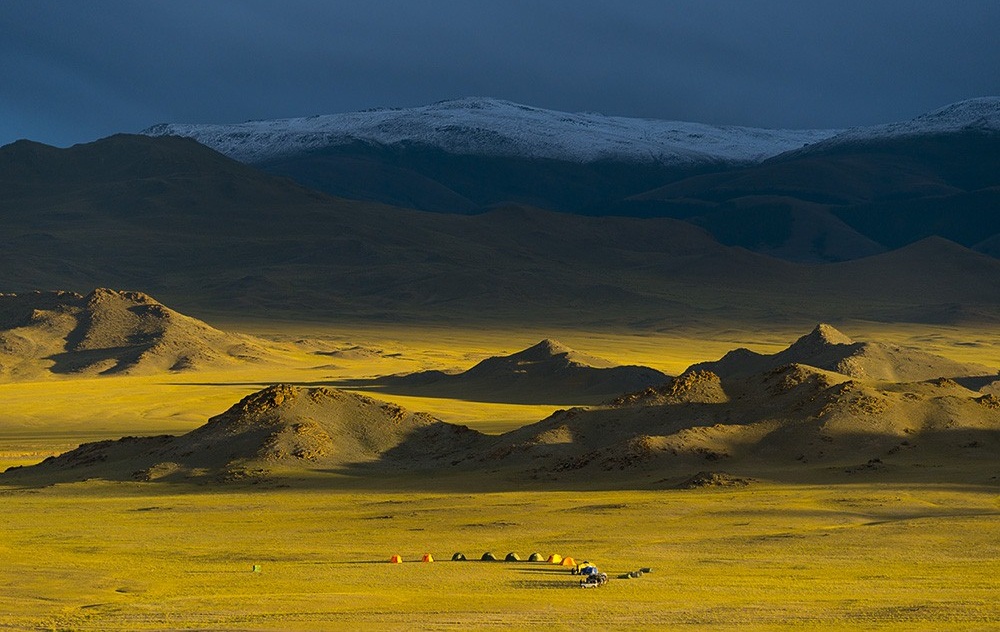It was with a mixture of mild excitement and deep trepidation that I packed my guide bags for the Mongolia expedition this summer. Leading a trip full of strangers with a co-guide I had never worked with, in a region rarely visited, while looking for an elusive cat we were fairly certain we wouldn’t see—well, it was daunting.
What I did know was that this would not be a routine walk in the park. It was one of those exploratory journeys where things happened on the fly and guests were forewarned to be flexible given the unknown hiking terrain and long drives ahead. This time “the park” was western Mongolia, one of the most sparsely populated parts of one of the least populated countries on Earth. Mongolia is three times the size of France and home to just 2.8 million people—half of them nomadic herders. To put that in perspective, it took us three hours to fly from the center of the country to the west, and our supplies were trucked from Ulaanbaatar, taking five days of hard driving to meet us. As one guest later dubbed it, we were deep in the “Vast Vastness of Mongolia.”
The main objective of the expedition was to join forces with World Wildlife Fund researchers in Mongolia and top international snow leopard scientists to search for the rare cat in two known habitats: the Yamaat Valley in the Altai Range near the Russian border and the Jargalant Hairhan (hairhan means “sacred”) mountain area of Khar Us Nuur National Park in central western Mongolia.

The camels used to carry camp supplies throughout the trip. © Olaf Malver
We looked, and looked, and looked—scouring the mountains relentlessly with our scopes. We found ample snow leopard traces: scratch marks on trees to mark territory, fresh paw prints, scat, and spray—everything except the animal itself. We knew it was close, and sometimes we felt the snow leopard was watching us. Recent satellite signals from a collared female confirmed its proximity.
Were we disappointed not to see the “star” animal? Perhaps a little. But the feeling was quickly eclipsed by the many other wonders this remarkable place offers: the majestic snow leopard prey species, argali sheep and ibex, traversing the steep slopes above us; the sweeping landscapes; and the hospitable herder family who welcomed us into their yurt for fermented mare’s milk.

Our Land Cruiser fording one of the rivers—no problem! © Olaf Malver
Looking back on the adventurous moments that naturally arise on a trip like this, there were many. Crossing raging rivers up to the windows of our Land Cruisers (yes, water seeped in and soaked our boots), meeting nomads traveling by Bactrian camel, and watching the last truly wild horses—the takhi—at dusk in Hustai National Park were just a few. But the most lasting impression from traveling across these Central Asian steppes and remote mountain ranges was the unforgettable Vast Vastness of Mongolia.
Come along….
Olaf

The entire group, including our guides. © Olaf Malver































